Family Tree of Foods
Like a family, some plants have relatives with similar features. Learn about vegetables from the same plant and why they are perfect for your health.
- Published: 1/13/2023
- Categories:
- 3 min. read
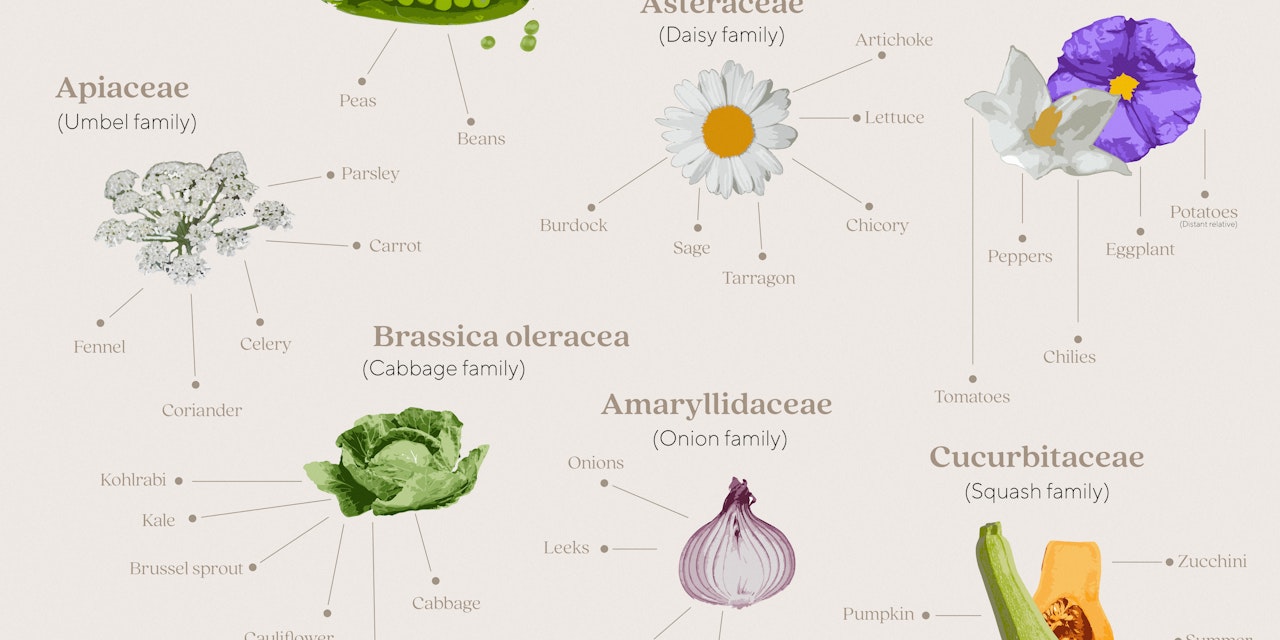
- Published: 1/13/2023
- Categories:
- 3 min. read
We are family, my brothers and my sisters and some classifications of common plants you eat. Just like a family tree connects you to members of your family, some plant foods have relatives that share similar features. Learn about some interesting vegetables that come from the same plant and what makes them perfect for your health.
Brassica oleracea (Cabbage family)
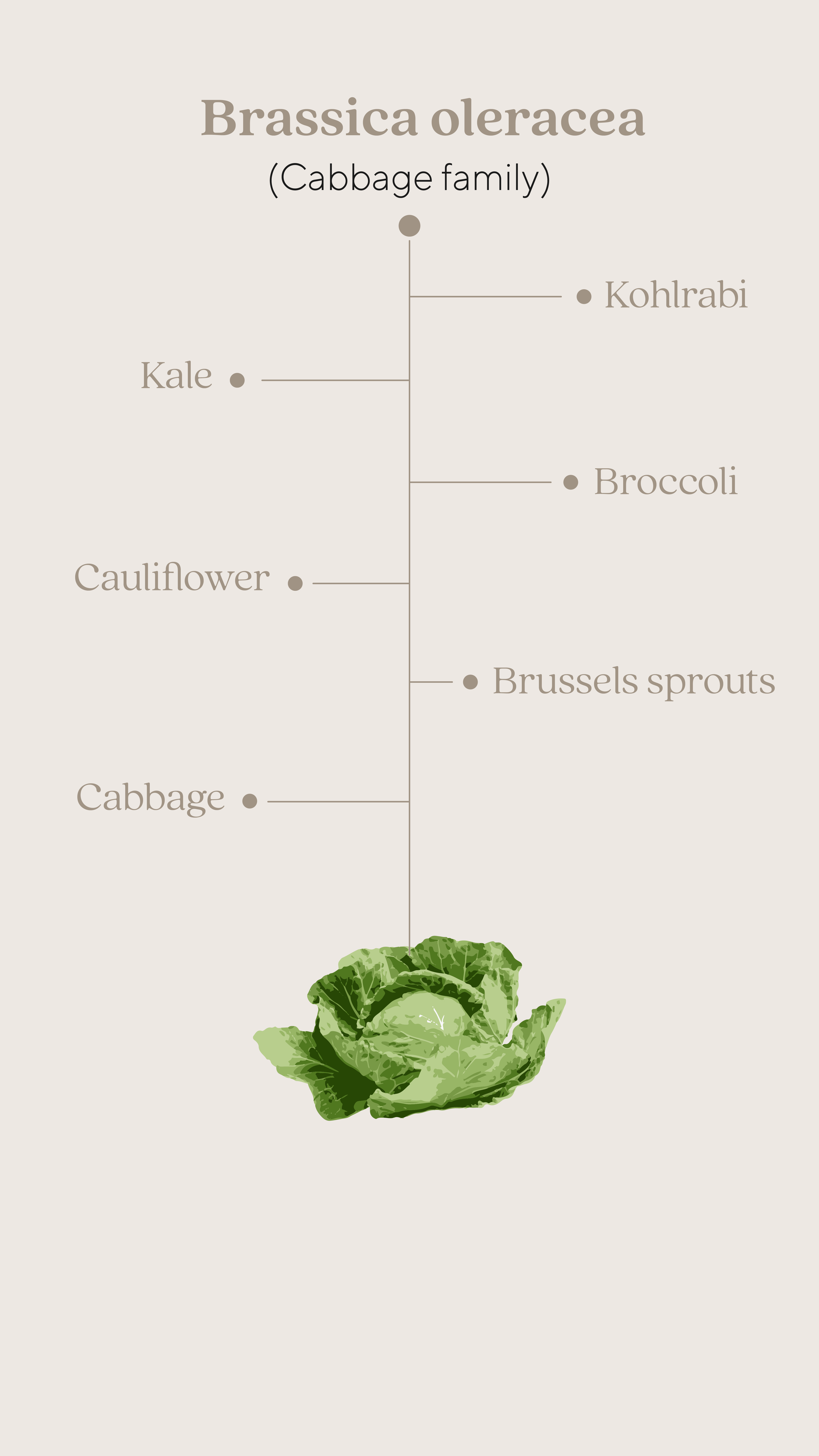
You may already know that Brussels sprouts and cabbage are similar, given their similar shapes and leaves, but did you know that broccoli, cauliflower, kohlrabi and kale also come from the same plant?
Vegetables from Brassica Oleracea, also known as wild mustard plant, are nutrient powerhouses. Including cruciferous vegetables in your diet may help to prevent some types of cancers and can benefit our heart health (1).
- Brussels sprouts
- Cabbage
- Broccoli
- Cauliflower
- Kohlrabi
- Kale
Amaryllidaceae (Onion family)
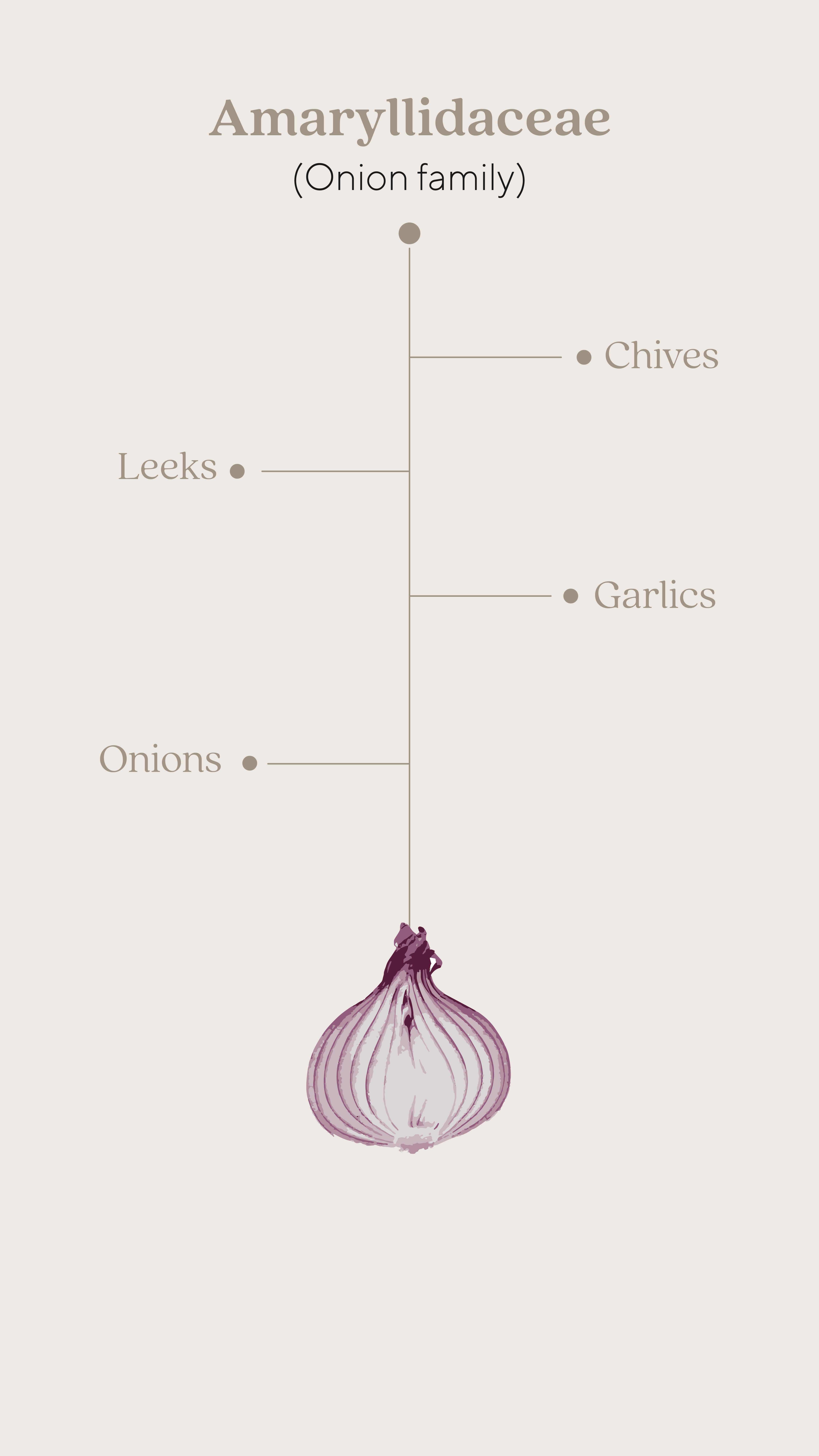
This plant family contains staples such as onions, garlic, leeks and chives. These are plants that have bulbs or stems that grow underground, with long leaves. These are all within the allium species and contain antioxidants and anti-inflammatory properties. These nutrients protect our cells and prevent some types of chronic disease (2). For maximum benefits, chop fresh garlic since it naturally reacts with oxygen.
- Onions
- Garlic
- Leeks
- Chives
Solanaceae (Nightshade family)
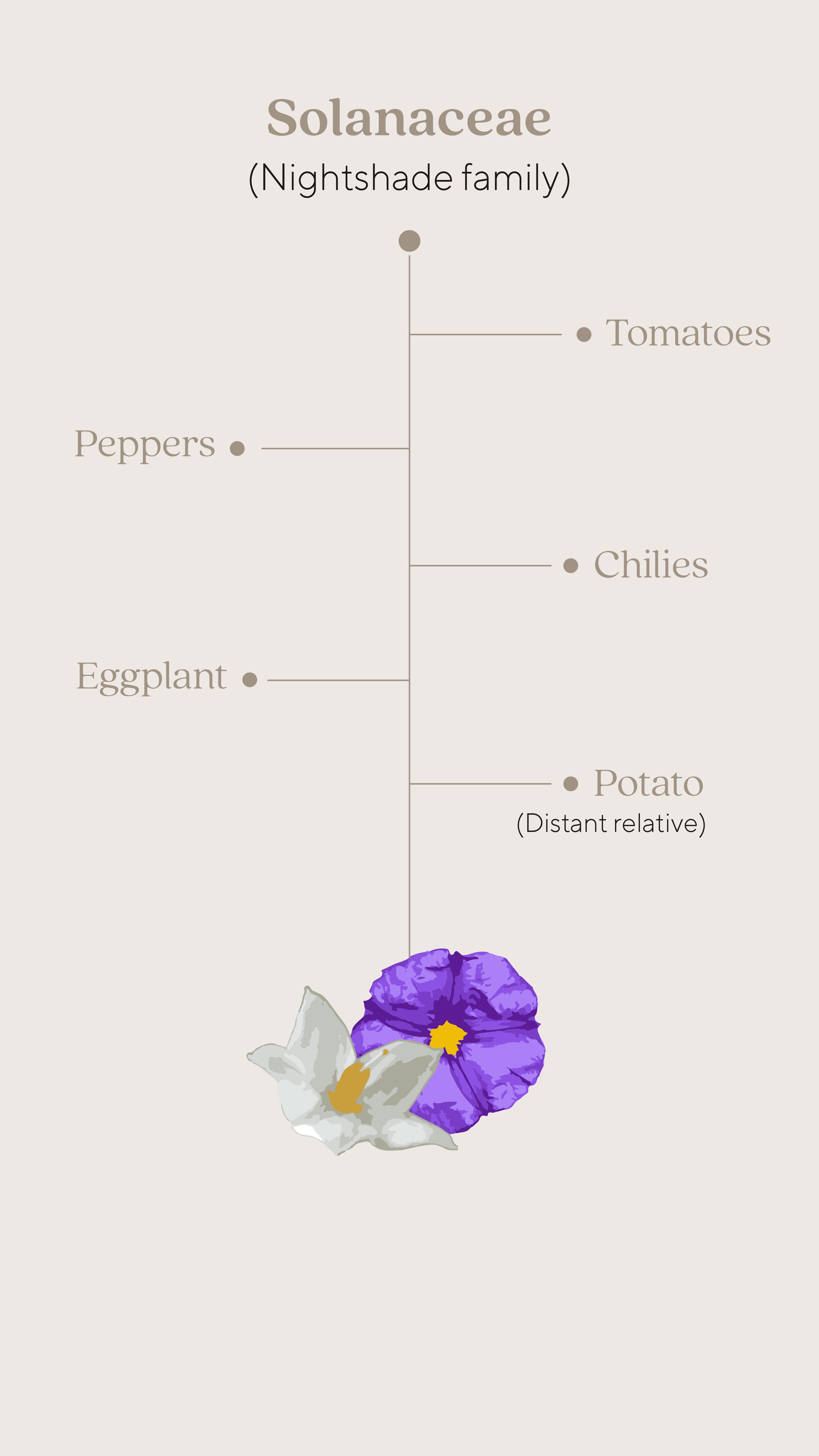
This family is otherwise known as the nightshade vegetables. These vegetables love warmer climates and include tomatoes, peppers, chilies and eggplant. The potato is also related to this bunch but acts more like a cousin since it can endure tougher weather conditions.
These vegetables have lots of vitamins such as vitamin C and A which support healthy skin. Some early studies show that they may not be best for people with autoimmune conditions such as arthritis or inflammatory bowel disease (3), but more evidence is needed before drawing any solid conclusions.
- Tomatoes
- Peppers
- Chilies
- Eggplant
- Potato (distant relative)
Curcubitaceae (Squash family)
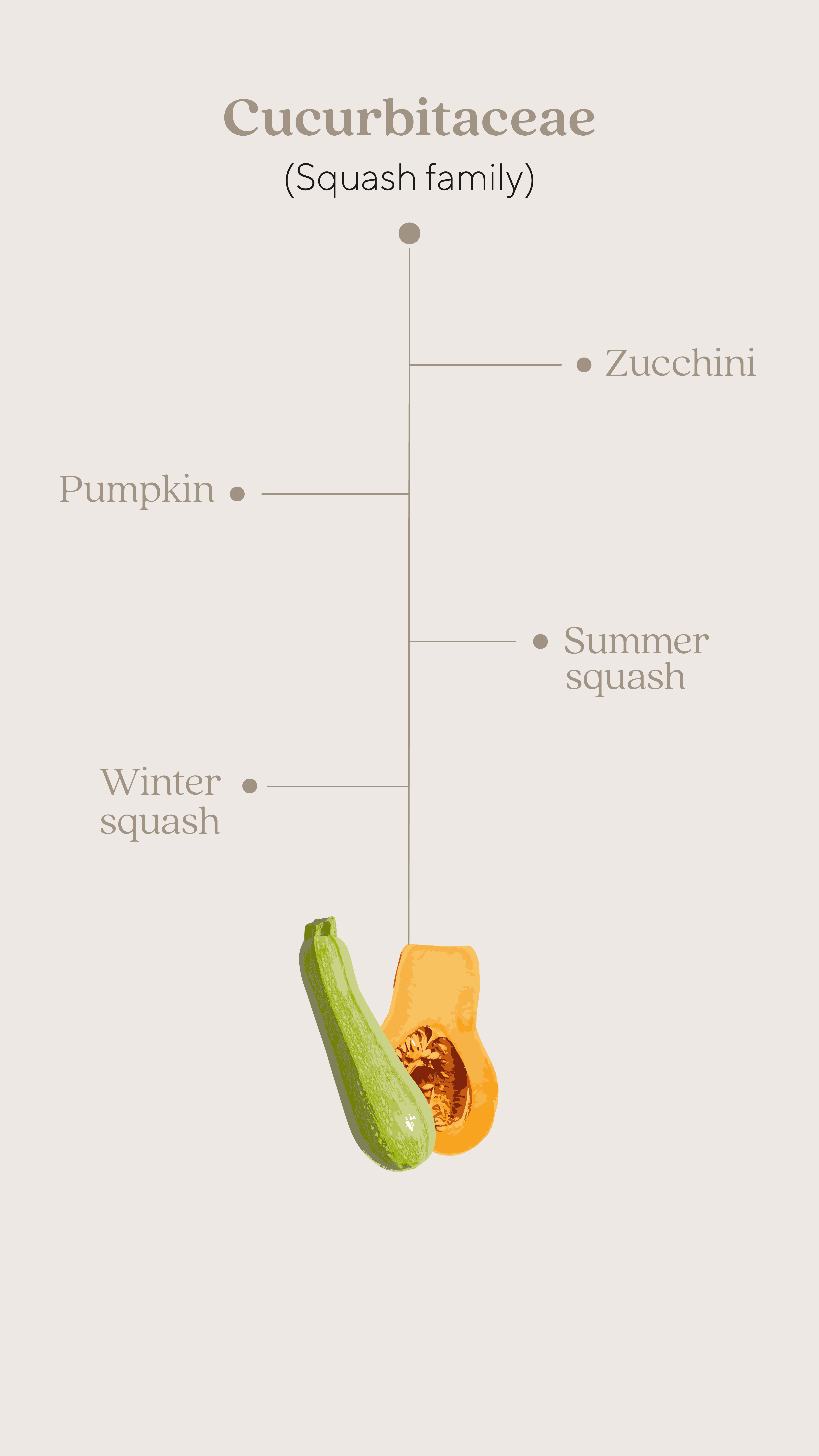
This is the squash family which includes zucchini, pumpkins, summer squash and winter squash. They produce seeds that are distinctively flat and pointed at one end, such as with pumpkin seeds.
Squash is a great source of immune boosting vitamin A and C. It also contains more distant relatives like cucumber and melons!
- Zucchini
- Pumpkin
- Summer squash
- Winder squash
Fabaceae (Legume family)
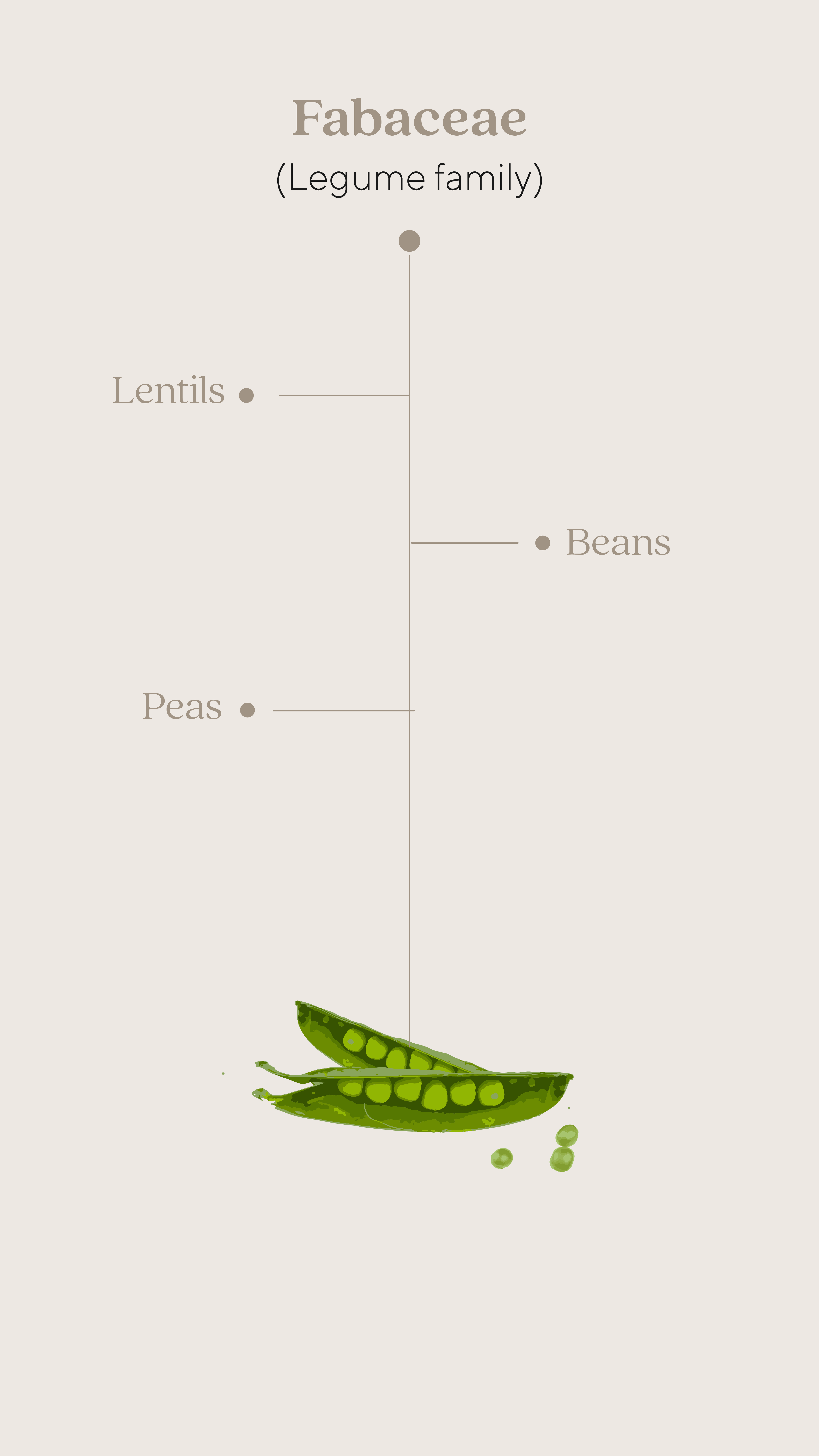
This includes peas and beans which are round seeds that grow in a pod. These come from climbing plants or bushes. Lentils can also be classified in this family (4). Beans and legumes are rich in plant-based protein and fiber, making them satiating and good for gut health. They also contain bone strengthening calcium and energizing iron.
- Peas
- Beans
- Lentils
Asteraceae (daisy family)
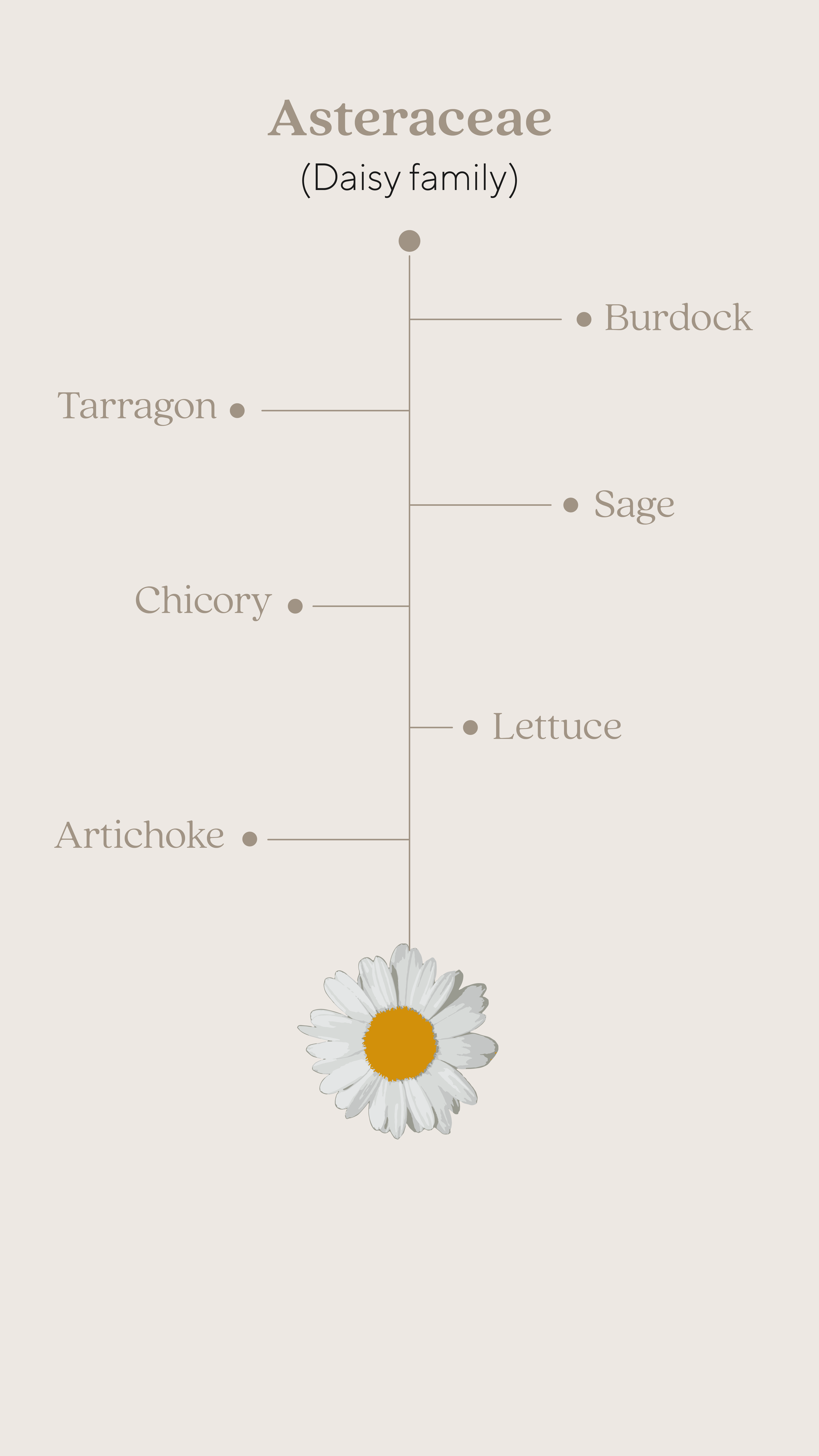
This family is characterized by its well known beautiful daisy flowers. Vegetables in this family also include artichoke, lettuce, chicory, sage, burdock and tarragon.
Chicory and artichoke are absolute all-stars when it comes to gut health. That’s because they are pre-biotics, which are food to healthy bacteria found in the digestive tract (5).
- Artichoke
- Lettuce
- Chicory
- Sage
- Tarragon
- Burdock
Apiaceae (umbel family)
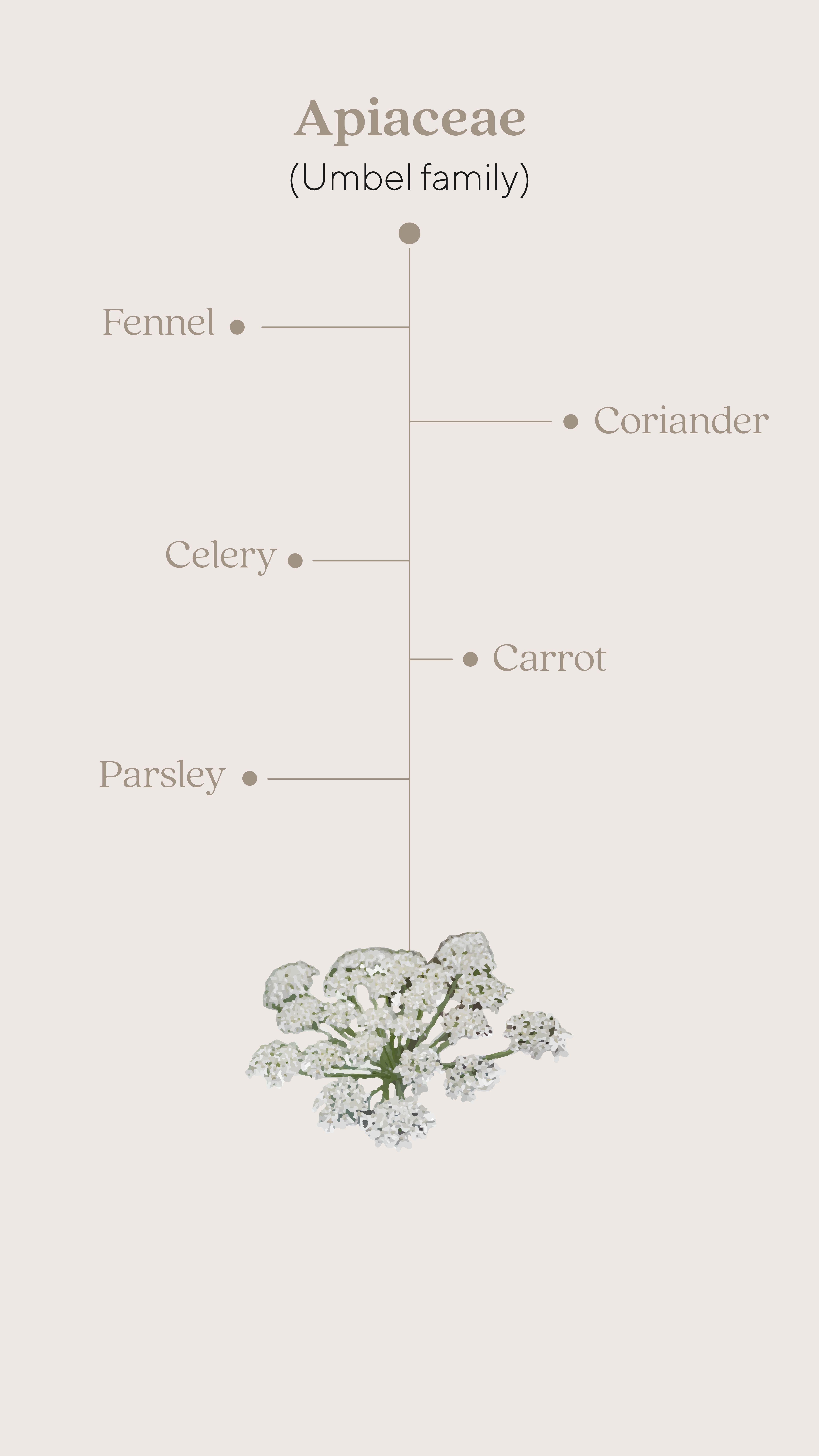
This family includes parsley, celery, fennel, coriander and carrot which come from long, thin seeds. The flowers of these plants come in clusters, attracting bees to help pollinate. These plants contain high levels of antioxidants and anti-inflammatory properties which are of importance for our immune system (6).
- Parsley
- Carrot
- Celery
- Coriander
- Fennel (7).
All in the family
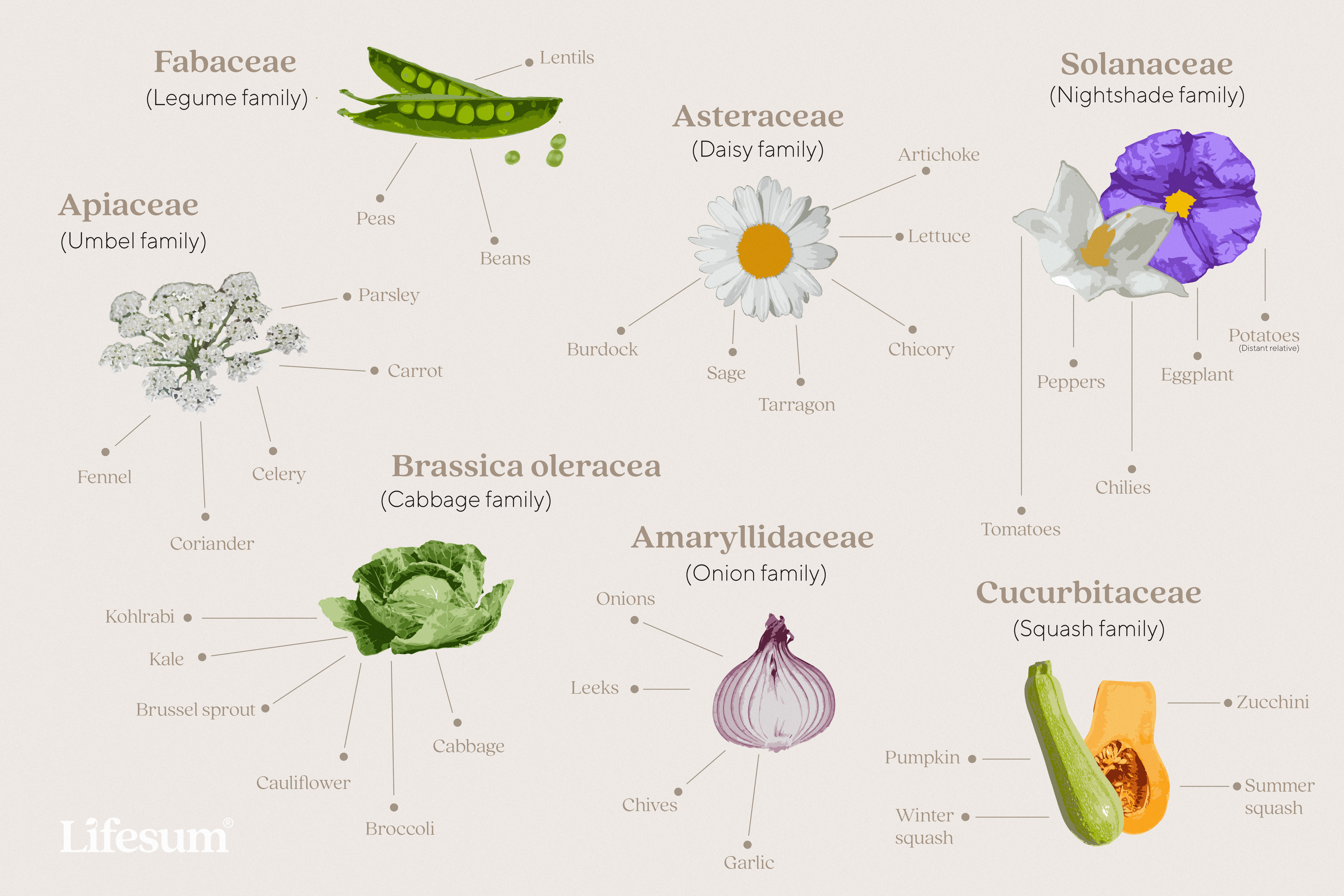
Getting a variety of foods is key, so aim to have some vegetables from each family. Plus focusing on more of these plant-based foods is a top way to reduce your carbon footprint and benefit the environment. If you’re wondering how many vegetables you should have, check out this article: How To Increase Your Vegetable Intake or download Lifesum.
7 references (hide)
All of the content and media on Lifesum is created and published for information purposes only. It is not intended to be used as a substitute for medical advice or treatment. Users should always consult with a doctor or other health care professional for medical advice. If you have or think you are at risk of developing an eating disorder, do not use the Lifesum app and seek immediate medical help.